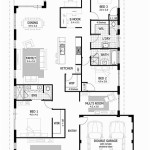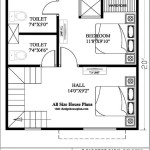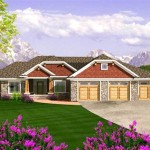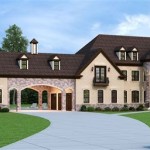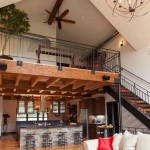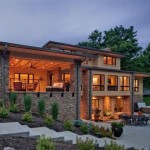Gothic Revival House Plans: A Journey into Architectural Grandeur
Gothic Revival architecture, a prominent style that emerged in the mid-18th century and flourished throughout the 19th century, drew inspiration from the medieval Gothic period. This architectural movement was a response to the classical styles that had dominated for centuries and represented a renewed appreciation for the aesthetics and design principles of the Middle Ages. Gothic Revival house plans offer a fascinating glimpse into a past era, characterized by pointed arches, elaborate ornamentation, and a romantic sensibility.
The style is readily identifiable by its distinct features. One of the most notable hallmarks is the pointed arch, used in windows, doorways, and even rooflines. This arch differs significantly from the rounded arch of Romanesque architecture and the flat lintels of Classical architecture. Another defining characteristic is the presence of intricate ornamentation, often incorporating elements like tracery, quatrefoils, and crockets. These decorative details were commonly carved from stone or wood and meticulously applied to facades, gables, and towers. Steeply pitched roofs, often adorned with gables and dormers, were also characteristic. These roofs not only enhanced the building's visual appeal but also provided ample attic space. Asymmetrical designs are very common, creating visual interest and breaking away from rigid symmetry common in other architectural styles. Towers, turrets, and projecting wings are often incorporated into the overall design. Finally, the materials frequently used in Gothic Revival construction include stone, brick, and wood, emphasizing the natural textures and colors of these materials.
Key Point 1: Identifying Authentic Gothic Revival Features
Understanding the core elements of Gothic Revival architecture is paramount when evaluating or designing Gothic Revival house plans. The pointed arch, as mentioned earlier, is a fundamental feature. It is crucial to examine the curvature and proportions of the arch, ensuring it aligns with historical precedents. True Gothic arches tend to be relatively slender and pointed, unlike the broader, more rounded arches sometimes found in watered-down interpretations. Furthermore, the presence and quality of ornamentation is key. Authentic Gothic Revival designs feature intricate details, often inspired by nature or religious symbolism. The craftsmanship of these details is a telltale sign of the building's authenticity. Mass-produced ornamentation, common in later iterations of the style, often lacks the nuance and artistry of hand-carved elements. Also, the analysis of rooflines is important. Steeply pitched roofs with gables and dormers are essential components. Pay attention to the slope of the roof and the detailing of the gables, looking for elements like bargeboards and finials that are characteristic of the style. Finally, when evaluating the layout, assess the overall symmetry or asymmetry of the design. Gothic Revival architecture typically embraces asymmetry, which is expressed in the arrangement of rooms, windows, and other architectural elements. A strictly symmetrical design may indicate a later or less authentic adaptation of the style.
Beyond these key features, the selection of materials plays a crucial role in defining the authenticity of a Gothic Revival structure. Stone, particularly locally sourced stone, was a preferred material. The texture and color variations of natural stone contributed to the building's visual appeal and sense of connection to its surroundings. Brick, often used in conjunction with stone, provided a cost-effective alternative while still maintaining the desired aesthetic. Wood, used for framing, trim, and interior finishes, added warmth and character to the building. The type of wood used and the way it was worked also influenced the overall impression. For example, oak was a popular choice for its strength and durability, while ornate carvings were often executed in softer woods like pine. When studying Gothic Revival house plans, take note of the specified materials and consider their historical accuracy. The use of modern materials, particularly synthetic ones, can detract from the authenticity and character of the design.
The windows in Gothic Revival houses merit close attention. Stained glass windows are a hallmark of the style, often depicting religious scenes or abstract patterns. The quality of the stained glass, the intricacy of the designs, and the use of lead cames to hold the glass panes together are all important factors. Lancet windows, tall and narrow windows with pointed arches, are another common feature. The proportions of these windows, their placement in the facade, and the detailing of their surrounds contribute to the overall aesthetic. Mullions, vertical divisions within the window frame, are often used to create smaller panes of glass, reflecting the medieval practice of using smaller pieces of glass due to manufacturing limitations. The design of the window frames themselves should also be considered. Ornate carvings, tracery, and other decorative elements can enhance the visual appeal of the windows and contribute to the building's overall character. The orientation of windows with respect to sunlight and views has an impact on the interior atmosphere, which is another element to assess when reviewing Gothic Revival building plans.
Key Point 2: Adapting Gothic Revival for Modern Living
While Gothic Revival architecture evokes a sense of historical charm, adapting it for modern living requires careful consideration of contemporary needs and preferences. Balancing the desire for authenticity with the demands of modern functionality can be a challenge, but it is essential for creating a comfortable and livable home. One of the most important considerations is the interior layout. Traditional Gothic Revival houses often featured smaller, more compartmentalized rooms, which may not suit the open-plan living spaces favored today. Adapting the layout to create larger, more flexible spaces while retaining the character of the original design requires careful planning. The design must maintain the gothic aesthetics without sacrificing the needs of modern life.
Modern amenities, such as updated kitchens, bathrooms, and mechanical systems, are necessary for modern living. Integrating these amenities seamlessly into the Gothic Revival aesthetic requires creativity and attention to detail. For example, modern appliances can be concealed behind custom cabinetry that complements the style of the house. Bathrooms can be designed with period-appropriate fixtures and finishes, such as clawfoot tubs, pedestal sinks, and subway tile. The integration of smart home technology can be achieved subtly, without disrupting the historical character of the building. The design of lighting systems is a critical point. Modern lighting fixtures can be selected to complement the Gothic Revival aesthetic, or concealed lighting can be used to highlight architectural features without being visually obtrusive. The goal is to incorporate these amenities in a way that enhances the functionality of the house without sacrificing its historical integrity.
Energy efficiency is another important consideration. Gothic Revival houses were not originally designed with modern energy-saving technologies in mind. Insulating walls, ceilings, and floors can significantly improve energy efficiency without altering the exterior appearance of the house. Modern windows, designed to look like traditional Gothic Revival windows, can provide superior insulation and reduce energy consumption. Solar panels can be integrated into the roofline discreetly or positioned in areas where they are not visible from the street. These measures can help to reduce energy costs and minimize the environmental impact of the house. Sustainability may also be a consideration during adaptation. Incorporating environmentally friendly materials and construction practices can further enhance the sustainability of the project. For example, reclaimed wood can be used for flooring and trim, and low-VOC paints and finishes can be used to improve indoor air quality. Adapting a Gothic Revival house for modern living requires balancing respect for the past with the needs of the present.
Key Point 3: Notable Examples and Inspirations for Gothic Revival House Plans
Studying notable examples of Gothic Revival architecture is invaluable when developing or evaluating Gothic Revival house plans. These structures provide a wealth of inspiration and demonstrate the range and versatility of the style. One of the most prominent examples is the Palace of Westminster in London, the seat of the British Parliament. Designed by Charles Barry and Augustus Pugin, this iconic building exemplifies the grandeur and ornamentation of Gothic Revival architecture. Its soaring towers, pointed arches, and intricate detailing are a testament to the style's potential for creating awe-inspiring structures. Another notable example is Strawberry Hill House in Twickenham, England, the home of Horace Walpole. This house is considered one of the earliest examples of Gothic Revival architecture and showcases the style's romantic and picturesque qualities. Its asymmetrical design, pointed windows, and whimsical ornamentation reflect Walpole's fascination with medieval history and art. Many university campuses also feature prominent Gothic Revival designs, as the style came to be associated with scholarly institutions.
In the United States, there are many impressive examples of Gothic Revival architecture. Trinity Church in New York City, designed by Richard Upjohn, is a masterpiece of the style. Its towering spire, stained glass windows, and elaborate carvings are a testament to Upjohn's skill and the style's ability to create spaces of spiritual significance. Lyndhurst, a mansion in Tarrytown, New York, is another notable example. Designed by Alexander Jackson Davis, this house showcases the style's picturesque qualities and its ability to blend seamlessly with its natural surroundings. Its asymmetrical design, pointed arches, and intricate detailing create a sense of romantic grandeur.
Beyond these specific examples, there are numerous other sources of inspiration for Gothic Revival house plans. Medieval cathedrals, castles, and monasteries provide a wealth of architectural details and design principles that can be adapted for residential use. Pattern books and architectural treatises from the 19th century, such as those by Augustus Pugin and Andrew Jackson Downing, offer valuable insights into the style's history and development. These sources can help architects and designers understand the underlying principles of Gothic Revival architecture and create authentic and historically informed designs. Finally, the study of local history and vernacular building traditions can provide valuable context for Gothic Revival house plans. Understanding the specific characteristics of Gothic Revival architecture in a particular region or community can help to create designs that are both authentic and responsive to their surroundings.

Gothic Revival House Plans Google Search Victorian Vintage Floor

Gothic Revival Style Christine Huckins Franck Architect Llc House Vintage Plans Architecture

Charming Gothic Revival Cottage 1204 Sq Ft Architectural Designs 43002pf House Plans

Gothic Revival An Alternative Trend For Victorian Americans House Plans Historic Preservation Architecture

Archi Maps Victorian House Plans Gothic Architecture

58 Gothic Floor Plans Ideas Vintage House

Charming Gothic Revival Farmhouse 43071pf Architectural Designs House Plans

58 Gothic Floor Plans Ideas Vintage House

Gothic Revival 1850 To 1870 Buildings

Gothic Revival Gem 43044pf Architectural Designs House Plans
Related Posts

